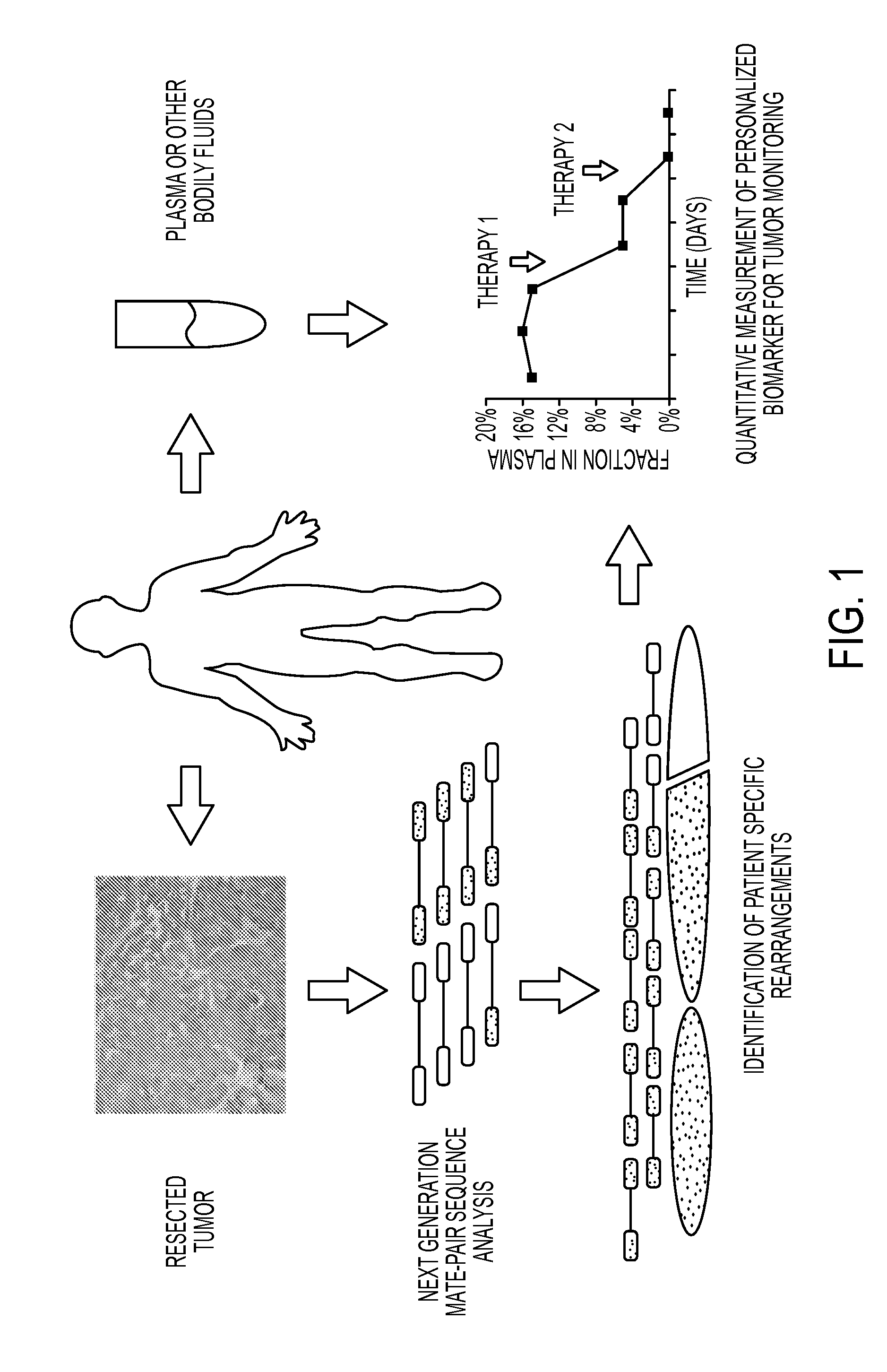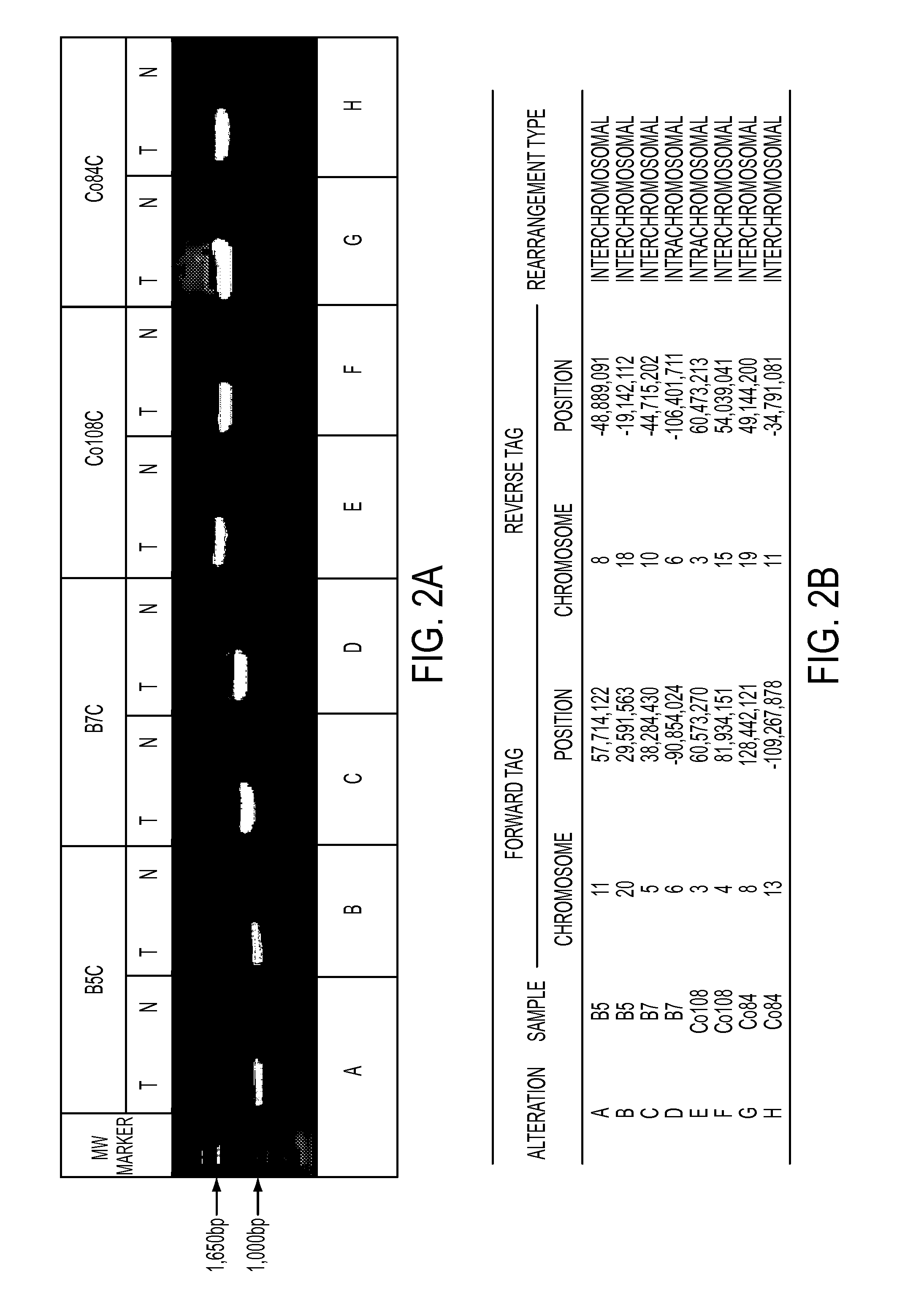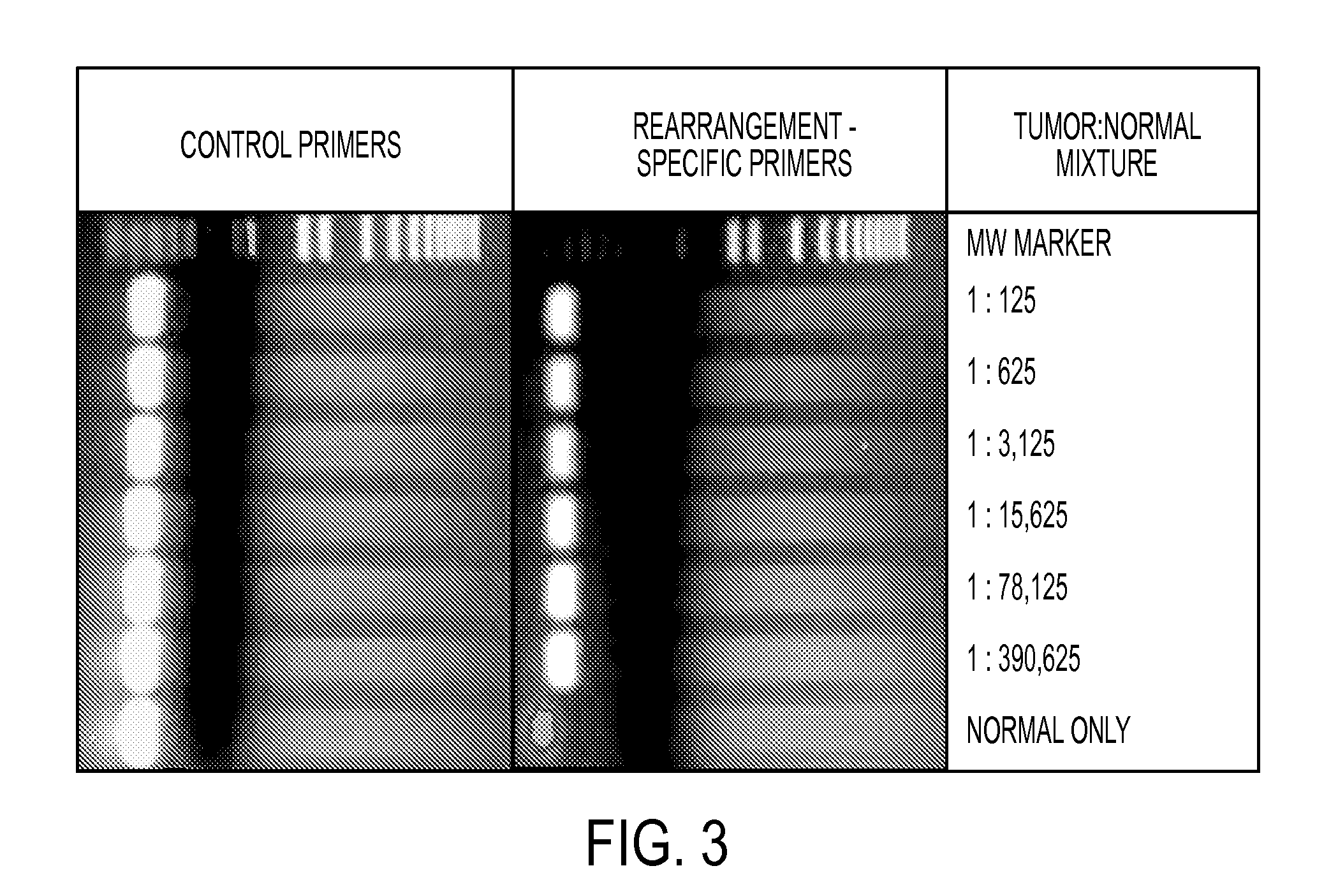Personalized Tumor Biomarkers
a tumor biomarker and personalization technology, applied in the field of personalized tumor biomarkers, can solve the problem of limited ability to detect such alterations
- Summary
- Abstract
- Description
- Claims
- Application Information
AI Technical Summary
Benefits of technology
Problems solved by technology
Method used
Image
Examples
example 1
Materials and Methods
Clinical Samples and Cell Lines
[0036]DNA samples were obtained from early passage xenografts and cell lines of breast and colorectal cancers as described (26). Normal DNA samples were obtained from matched normal tissue. Plasma samples were collected from colorectal cancer patients Hx402 and Hx403 and from an unrelated normal control. All samples were obtained in accordance with the Health Insurance Portability and Accountability Act (HIPAA).
Digital Karyotyping and Illumina BeadChip Arrays
[0037]A Digital Karyotyping library for colorectal cancer cell line Co84C was constructed as previously described (6). In summary, 17 bp genomic DNA tags were generated using the NlaIII and Sad restriction enzymes. The experimental tags obtained were concatenated, cloned and sequenced. Previously described software was used to extract the experimental tags from the sequencing data. The sequences of the experimental tags were compared to the predicted virtual tags extracted from...
example 2
Description of the Approach
[0049]The PARE approach, shown schematically in FIG. 1, in one embodiment employs the identification of patient-specific rearrangements in tumor samples. To determine the feasibility of identifying such alterations using next generation sequencing approaches, we initially analyzed four tumor samples (two colon and two breast tumors) and their matched normal tissue samples using the Applied Biosystems SOLiD System (Table 1). Genomic DNA from each sample was purified, sheared and used to generate libraries with mate-paired tags ˜1.4 kb apart. Libraries were digitally amplified by emulsion polymerase chain reaction (PCR) on magnetic beads (21) and 25 bp mate-paired tags were sequenced using the sequencing-by-ligation approach (15, 22). An average of 198.1 million 25 bp reads were obtained for each sample where each read aligned perfectly and was uniquely localized in the reference human genome (hg18), resulting in 4.95 Gb mappable sequence per sample. An aver...
example 3
Identification of Somatic Rearrangements
[0050]Two methods were used to identify somatic rearrangements from these data (FIG. 5). The first approach involved searching for tags whose mate-pairs were derived from different chromosomes (interchromosomal rearrangements). The high physical coverage of breakpoints provided by the ˜40 million mate-paired sequences per sample (Table 1) suggested that a large fraction of such translocations could be identified. End sequences from such mate-paired tags were grouped into 1 kb bins and those bin pairs that were observed at least 5 times were analyzed further. The requirement for ≦5 occurrences minimized the chance that the presumptive fusion sequences represent incorrect mapping to the reference genome or artifacts of library construction. Comparison with SOLiD libraries made from the matched normal samples reduced the possibility that the fusion sequences represented rare germline variants rather than somatic events.
[0051]The second approach c...
PUM
| Property | Measurement | Unit |
|---|---|---|
| time | aaaaa | aaaaa |
| area | aaaaa | aaaaa |
| density | aaaaa | aaaaa |
Abstract
Description
Claims
Application Information
 Login to View More
Login to View More - R&D
- Intellectual Property
- Life Sciences
- Materials
- Tech Scout
- Unparalleled Data Quality
- Higher Quality Content
- 60% Fewer Hallucinations
Browse by: Latest US Patents, China's latest patents, Technical Efficacy Thesaurus, Application Domain, Technology Topic, Popular Technical Reports.
© 2025 PatSnap. All rights reserved.Legal|Privacy policy|Modern Slavery Act Transparency Statement|Sitemap|About US| Contact US: help@patsnap.com



